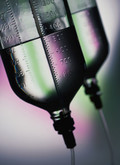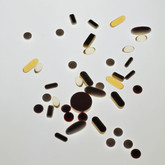Biosimilars
Biosimilar low molecular weight heparins in Brazil
In Brazil, the registration of new drugs is carried out only when the regulatory agency (Agência Nacional de Vigilância Sanitária, Anvisa) is fully satisfied with their quality, efficacy and safety. Likewise for biosimilars it is necessary that the biosimilar be equally effective and safe and without contaminants in relation to the originator medicine.
Everybody jumping on the biosimilars bandwagon
According to a report by Reuters on 13 January 2011, Big Pharma is taking a major interest in the biosimilars market. During interviews with Amgen, Merck, and Biogen Idec at the JP Morgan’s 28th Annual Healthcare Conference in San Francisco, USA, biosimilars was the hot topic.
Global biosimilar market to grow to US$3.7 billion in 2015
According to a report by Datamonitor published on 23 February 2011 the global biosimilars market will grow from US$243 million in 2010 to US$3.7 billion in 2015.
Boehringer Ingelheim acquires Amgen biotech site
Boehringer Ingelheim, one of the world’s leading companies for contract development and manufacturing of biopharmaceuticals, announced on 25 March 2011 that it had formally acquired Amgen’s biopharmaceutical development and manufacturing facility in Fremont, California, USA.
Further lobbying over biosimilars
Brand-name drug companies are trying to weaken a provision of the US Patient Protection and Affordable Care Act that was designed to open up generic competition in biotechnology medicines and save billions of dollars. The industry, patients and providers are watching closely to see how the FDA will interpret the law, in documents that are expected to be released during late 2011.
Ongoing monitoring of biosimilar G-CSF (filgrastim)
Sandoz is carrying out ongoing studies to ensure the safety of its biosimilar recombinant human granulocyte colony-stimulating factor (filgrastim G-CSF). The MONITOR-GCSF study will recruit at least 1,000 patients from a minimum of 75 centres and follow them for a maximum of six cycles of chemotherapy.
Are biosimilars an easy option for big money
With the recent JP Morgan 29th Annual Healthcare Conference 2011 in San Francisco, US came a chance for reporters to quiz all the big name firms in one easy sweep. The result reported by Reuters is that the pharma industry is poised to dive into biosimilars.
Samsung to enter biosimilars market
Everybody is jumping on the biosimilars bandwagon these days, and it seems it is not just limited to pharmaceutical companies. Contract research organisation, Quintiles, announced on 28 February 2011 that it has entered into a deal with electronics giant Samsung to provide biologicals manufacturing and biosimilar development.
Biosimilar substitution in the EU
Although many things—including regulations for licensing of biosimilars—are harmonised within the EU, the attitude towards biosimilars and their substitution within the different countries of the EU varies widely.
Spectrum to develop biosimilar monoclonal antibody
California-based Spectrum Laboratories announced on 5 January 2011 that it has signed an agreement with contract research organisation Viropro for the development of a biosimilar version of Roche’s blood-cancer drug Rituxan (rituximab).













